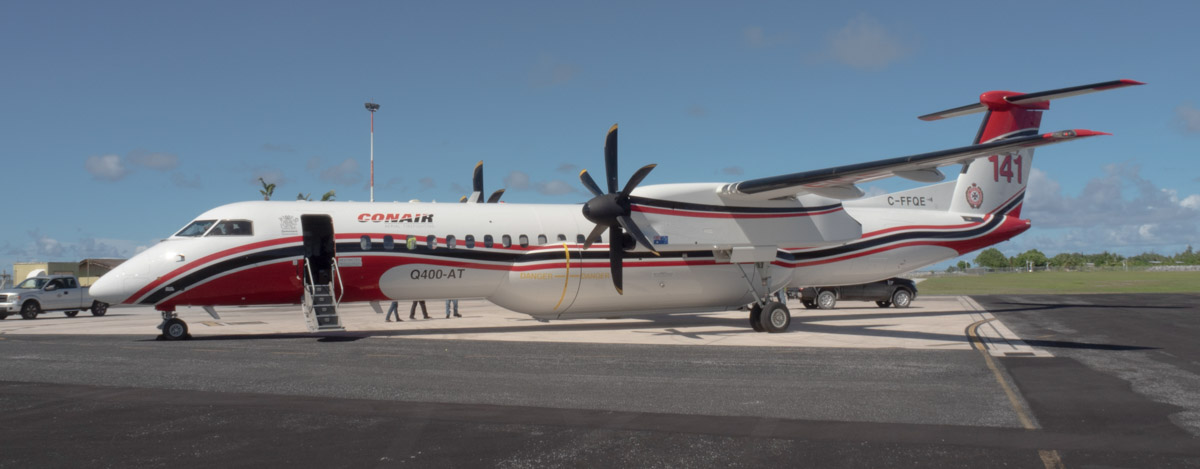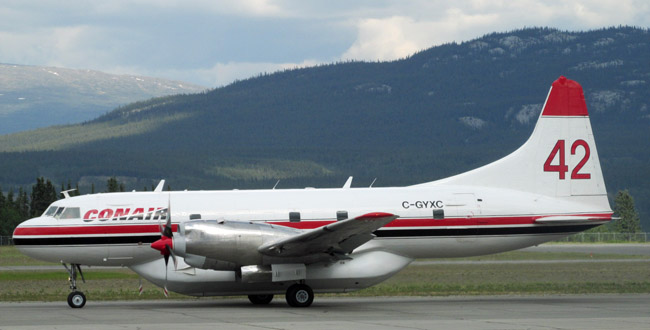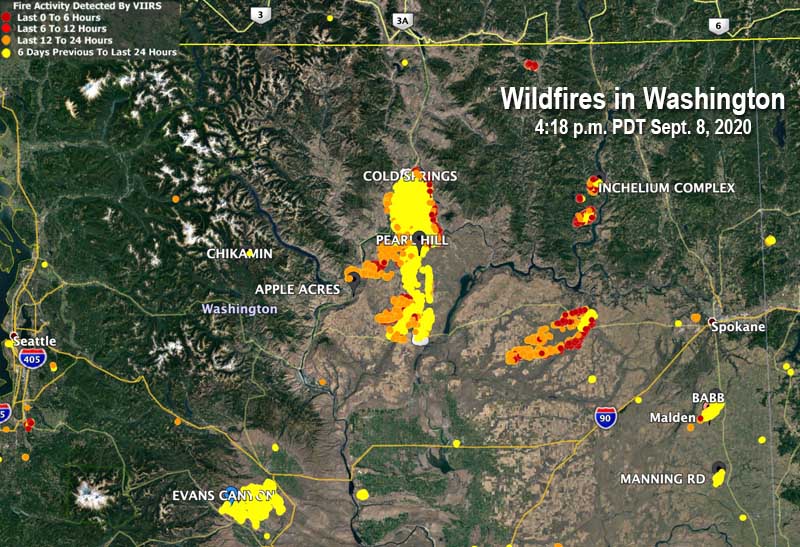
The Conair Group plans to retire all of their legacy L-188 and CV-580 air tankers and over the next two to three years replace them with De Havilland Canada DHC-8 Q400s.
In a statement, the company gave their rationale for making the change:
“Planes used to fight wildfires as airtankers are often older models and are flown into demanding environments, inevitably resulting in metal fatigue over time. In addition, aircraft designed to obsolete standards leads to increased risk of incidents, costly repairs, limited replacement parts, and ultimately time grounded from fighting fires. Conair’s strategic move towards a long-term vision includes replacing the company’s fleet of heavy legacy airtankers with the new Q400ATs.
“We evaluated 29 aircraft before selecting the Q400 for modification into an aerial firefighting tool. The unanimous opinion of our flight operations experts was that the Q400 exceeds all the Next Generation performance criteria within a maneuverable and stable platform.” says Jeff Berry, Director of Business Development at Conair. “The Q400AT is fast, fuel efficient, and tactically flexible, operating both initial attack as well as sustained support actions. The Q400 is still in production and has strong Original Equipment Manufacturer (OEM) support from De Havilland Aircraft of Canada Limited (De Havilland Canada), guaranteeing availability of parts and servicing for years.”
The eleven Q400s, formerly owned by Flybe and now in Europe, will be delivered to Conair beginning this month.
In 2017 the Conair Group secured a deal to sell six Q400 Multi-Role aircraft converted to air tankers to France’s Securite Civile (Department of Civil Defence and Emergency Preparedness). These were new aircraft that Conair purchased from Bombardier which can be reconfigured in a few hours to carry passengers, hence the Multi-Role (MR) designation. The new aircraft are replacing France’s old S-2 air tankers.
One of Conair’s Q400s, a Q400AT not configured to carry passengers, was on contract in Queensland, Australia during the 2020/2021 summer bushfire season through December. This was the first time the state has had regular access to a large air tanker, rather than borrowing from New South Wales or Victoria. Tanker 141/Bomber 141 (C-FFQE) arrived in Bundaberg in August after departing from Abbotsford British Columbia and making fuel stops at Oakland, Honolulu, Majuro (Marshall Islands), Honiara (Solomon Islands), and Brisbane where it cleared customs.

In September, 2020, Jeff Berry, Manager of Business Development at Conair, said, “[The Q400AT] is a pure air tanker STC [supplemental type certificate], so we don’t have any of the residual plumbing, wiring, attachment points inside, or heavy duty flooring that you need for an MR, so it’s stripped down to be a pure tanker. And it gives us the maximum fuel load and the maximum retardant tank capacity. You get the full 10,000 liters [2,642 gallons]. The Q400AT is truly a ‘Green’ airtanker — it is incredibly fuel efficient burning only 58 percent of the fuel per hour while carrying 85 percent of the load of a typical type 1 airtanker.”
According to Wikipedia the Q400’s maximum cruise speed is 345 to 414 mph. It seems likely that the bolted-on external retardant tank would have a negative effect on the air speed and range. Out of the factory it is rated to haul up to 90 passengers.

Conair has been fighting fires for 51 years. In addition to the CV-580, Q400, and L-188, their fleet currently is comprised of air attack and bird dog aircraft (Cessna Caravan C208B and Turbo Commander TC-690A), amphibious scooping air tankers (CL215T and Air Tractor AT802A), and land-based air tankers (Avro RJ85 and Air Tractor AT 802).
The manufacture date of the Convair 580 in the photo was corrected to show it was 1958, not 1981.









